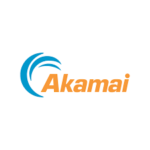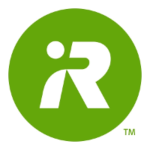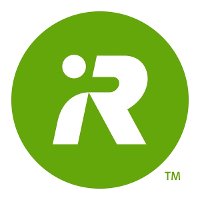Year: 2019
Care.com to be Acquired by IAC/Interactive
 IAC/Interactive (NYSE: IAC), the large internet and media conglomerate with a market cap of $21 billion, annual sales of roughly $4.8 billion, $3.4 billion in cash, and $3.1 billion in total debt, announced its intention on Friday, December 20th to acquire Care.com for $15 per share in an all cash deal. The valuation is, according to IAC, a 34 percent premium to Care.com’s closing share price on October 25, 2019, the last trading day before a press account indicated that a deal might be in the offing.
IAC/Interactive (NYSE: IAC), the large internet and media conglomerate with a market cap of $21 billion, annual sales of roughly $4.8 billion, $3.4 billion in cash, and $3.1 billion in total debt, announced its intention on Friday, December 20th to acquire Care.com for $15 per share in an all cash deal. The valuation is, according to IAC, a 34 percent premium to Care.com’s closing share price on October 25, 2019, the last trading day before a press account indicated that a deal might be in the offing.
With a history of acquiring somewhat distressed internet companies with solid brands and customer sets, IAC’s acquisition of Care.com is consistent with several of its previous purchases, including Ask Jeeves, and Angie’s List, which following its merger with HomeAdvsior is now called ANGI Home Services (NASDAQ: ANGI). Our understanding is that IAC will roll Care.com (previously) into the IAC/Interactive umbrella. As part of the deal, IAC has already assigned a new CEO to run Care.com. It would not be unreasonable to assume that pending changes to its management and operational structure, that IAC would either establish a tracking stock, or spin-off Care.com in the future, perhaps under a new name, or with additional businesses currently owned by IAC, or ones yet to be acquired.
Undeniably, it has been a challenging year for Care.com. Back in March of 2019, The Wall Street Journal published a damaging expose which criticized Care.com’s screening processes, and found hundreds of instances in which daycare centers listed on its website were not properly vetted. The WSJ expose prompted Care.com to immediately remove flawed agency listings as well as unveil new security and background checks to be paid by the company.
The June resignation of the company’s CFO, who remained in a transition role through August 31, the early August announcement that founder, Chairwoman, and CEO, Sheila Marcelo would transition to a new role as executive chairwoman, along with a reduction in revenue and earnings guidance, all contributed to a 70 percent contraction in its share price. In our opinion, the damage inflicted on Care.com’s brand is by no means permanent, though the cost to ensure consumer satisfaction with the level of background checking on caregivers remains in flux. An additional question mark has been the cost of assigning Care.com employees to fulfill caregiving roles for the corporations and universities utilizing its last minute backup care services.
Getting Care.com’s board to agree on a take-over bid may have been easier than hiring a brand new executive management team, which would have much work to do behind the scenes to re-establish a profitable, predictable growth trajectory. A new team would also be required to make decisions publicly, rather than behind the aegis of a large conglomerate, such as IAC/Interactive. We have no reason not to believe that all reasonable strategic buyers were consulted during the company’s sale process, so it is unlikely—though not impossible—that another suitor would enter the fray to make a higher bid Care.com.
Akamai Technologies: Zeroing in on Zero Trust
 Through internal development and acquisitions, cloud security has grown rapidly to become an $800 million annual run rate business for Cambridge, MA-based Akamai Technologies (NASDAQ: AKAM). The business is on track to generate nearly 30 percent of sales this year, up from 16 percent of sales for all of 2016. Through its early work with Kona Site Defender, which protects websites, web applications, and APIs against cyberattacks, Akamai developed a core competence in protecting against Distributed Denial of Service (DDoS) attacks against data center software assets. Such attacks involve the high-jacking of a large number of computer servers to overwhelm a target website or data center with malicious traffic.
Through internal development and acquisitions, cloud security has grown rapidly to become an $800 million annual run rate business for Cambridge, MA-based Akamai Technologies (NASDAQ: AKAM). The business is on track to generate nearly 30 percent of sales this year, up from 16 percent of sales for all of 2016. Through its early work with Kona Site Defender, which protects websites, web applications, and APIs against cyberattacks, Akamai developed a core competence in protecting against Distributed Denial of Service (DDoS) attacks against data center software assets. Such attacks involve the high-jacking of a large number of computer servers to overwhelm a target website or data center with malicious traffic.
With users, applications and devices moving outside the traditional perimeter of corporate firewalls, new approaches are required to ensure against the infection or theft of corporate data assets. To address this growing problem, Akamai has been developing a new cloud security architecture which it calls Zero Trust. The underlying principle behind zero trust is akin to that promulgated by former US president Ronald Reagan, who described the necessity to “trust, yet verify” any agreement that might be reached with the Soviet Union. In the same way that treaties must be verified, so must the identities of those who present a higher risk to data access, including contractors and employees in remote geographies. In such instances, corporations will wish to only grant precise access to what is needed, rather than broad access to a corporate network.
A key element of Akamai’s approach is centered around technology acquired last year from Janrain, which helps Akamai to decipher login history and access patterns, such as the city and time of day when such logins occur. With technology provided by Janrain, Akamai now helps customers in the area of identity proofing, authentication without using passwords, access control, web fraud prevention, and advertising fraud.
Last week, Akamai announced the tuck-in acquisition of KryptCo, a Cambridge, MA startup, whose engineers have developed mobile-based technology for multi-factor user authentication, which will fit into Akamai’s Enterprise Access Control Framework. Authenticating and assigning users the correct level of access to a data network remains a key technical challenge, as many approaches to access control are vulnerable to phishing attacks, in which user data, including alphanumeric login credentials, are targeted. Kryptco has developed a new approach, which does not require a pin number for authorization.
By next year, cloud security could contribute in excess of $1 billion in revenue and comprise about 34 percent of sales, which would be twice the percentage of revenue contributed just three years ago. The challenges posed by corporate data theft and espionage are likely to keep the category of zero trust in focus for many corporations and government entities for many years to come.
iRobot: Rethinking Lawn Care
 iRobot has thus far had its greatest success inside the home, as the Roomba and Braava for vacuum cleaning and floor mopping, respectively, account for virtually all of its revenue, and the lion’s share of the more than 20 million consumer robots it has sold since inception. For many years, however, iRobot has explored the opportunity to automate the mundane tasks of outdoor home maintenance. iRobot’s Looj, a $299 robot that cleaned gutters, was an early experiment that had a core following, but has since been discontinued as its market opportunity was ultimately limited in size.
iRobot has thus far had its greatest success inside the home, as the Roomba and Braava for vacuum cleaning and floor mopping, respectively, account for virtually all of its revenue, and the lion’s share of the more than 20 million consumer robots it has sold since inception. For many years, however, iRobot has explored the opportunity to automate the mundane tasks of outdoor home maintenance. iRobot’s Looj, a $299 robot that cleaned gutters, was an early experiment that had a core following, but has since been discontinued as its market opportunity was ultimately limited in size.
It may come as a surprise to some that the largest outdoor consumer robot category is lawn mowing. Robotic Lawn Mowers (RLMs) have been established for many years in Europe, where the category has seen its largest number of early adopters, and represents an annual revenue opportunity of $400 million.
iRobot has been eyeing the market for RLMs for at least five years, as evidenced by its trademark application in 2014 for Terra, the Latin word for earth or ground, in which the company noted that Terra would be used for robotic lawnmowers, as well as structural and replacement parts and fittings. Terra, iRobot’s long awaited RLM will launch later this quarter is Germany, with plans for a US beta program later this year. Terra utilizes a new wireless approach to guiding an outdoor robot, which gives it a technological edge over other products in the category that require the placement of embedded boundary wires to outline the path of the robot so that it does not go astray.
Unlike in the US, the market for robotic lawnmowers is well-established in Europe, particularly in Sweden, Germany, France and Switzerland, where an aging, relatively homogenous population, often attuned to environmental concerns, and burdened by expensive landscaping services have become the earliest adopters of robotic lawnmowers. European lawns, moreover, are typically smaller, flatter, and have fewer obstacles embedded, and therefore lawn mowing can be more easily automated.
Several of the industry’s largest players are based in Europe, including Husqvarna, the Swedish provider of outdoor power products, which introduced its first robotic lawnmower in 1995. It also markets products under the Gardena and McCulloch consumer brands. According to market research estimates we have seen, Husqvarna may control as much as 50 percent of the European market. Other participants include Robert Bosch, Honda, and John Deere, which sells a robotic lawnmower in Europe, but not in the US.
The common threads and limitations of the current generation of robotic lawn mowers—in addition to the use of boundary wire—are high retail prices, often in excess of $1,500. Challenges that remain include the ability to consistently cut grass in lots greater than 1/3 of an acre in size, cutting grass in excess of 2” high, as well as certain types of rough grass. Other challenges include navigating garden beds, trees, rocks, and other lawn debris, where additional boundary wire and sensors must demarcate the areas to be avoided by the robot.
iRobot’s heritage for producing easy to use category leading indoor robots, combined with a new wireless approach, along with its core competence in visual navigation technology suggest considerable for potential for Terra.
Care.com: Addressing Safety in the Gig Economy
 As the internet has transformed commerce, social, and work life over the last 10 years, consumers have become increasingly willing to entrust personal safety to operators of websites that provide matching services. Dating over the internet, once taboo for fear of linking up with a sociopath, has given way to comfort with finding in some cases, partners for life. Finding and accepting transportation over the internet comes along with the risk of placing one’s personal safety in the hands of a driver whose qualifications and personal habits are something of a mystery.
As the internet has transformed commerce, social, and work life over the last 10 years, consumers have become increasingly willing to entrust personal safety to operators of websites that provide matching services. Dating over the internet, once taboo for fear of linking up with a sociopath, has given way to comfort with finding in some cases, partners for life. Finding and accepting transportation over the internet comes along with the risk of placing one’s personal safety in the hands of a driver whose qualifications and personal habits are something of a mystery.
On Friday, March 8th, the day after Care.com released Q4 results, The Wall Street Journal published a highly critical article about Care.com’s screening practices for caregivers in its online edition, entitled, “Care.com Puts Onus on Families to Check Caregivers’ Backgrounds—With Sometimes Tragic Outcomes; The largest online marketplace for such services says its members are responsible for ensuring background checks are performed.” The article was also published on the first page of the Journal’s week-end print edition. Without reviewing here the entire contents of the article, the most salient points were that the Journal had found hundreds of instances in which daycare centers were listed on Care.com’s website as state-licensed, but were not. In at least one instance children died while under the care of a non-licensed facility.
The article was also critical of Care.com’s screening procedures. Care.com’s preliminary screening checks multijurisdictional databases, as well as the National Sex Offender public website, as part of a manual process, which can take up to 48 hours, and which rejects an estimated 10 percent of those seeking a listing within 24 hours. Existing and prospective customers can also purchase additional packages that range in price from $59 to $300 to conduct a more detailed level of screening.
The article, while specific to Care.com, raises the question of responsibility and liability for companies operating in the gig economy. Like LinkedIn, Indeed, and other jobsites, Care.com does not conduct employment level background checks. Uber, for example, like Care.com, conducts a background check on its service providers, ie. drivers. This includes a Motor Vehicle Record review, as well as a criminal background check. Background checks for Uber drivers, according to the Uber website, are conducted by Checkr, a third party background check provider that is accredited by the National Association of Professional Background screeners.
On March 11th, Care.com filed an 8-K with the SEC in which it noted that it would no longer allow caregivers that are new to the platform to engage with the platform until the preliminary screen has been completed. The company also disclosed that it was exploring solutions to help verify the identity of both caregivers and care seekers on its platform. Care.com will also be looking at potential changes regarding notification of members on its websites when, for example, a caregiver is no longer allowed to provide services on the platform. Care.com also eliminated all listings of daycare centers that were not updated and reviewed by the daycare center itself. Finally, Care.com announced a new board level committee that will oversee the company’s safety and cybersecurity programs.
To be sure, the concept of guarding personal safety over the internet continues to evolve. It is likely that industry best practices will emerge over time. However, there is still likely to be an element of trust every time someone steps into an Uber or Lyft-driven vehicle, accepts an invitation for lunch through an online dating site, hires a person based in part on job experience posted on a website, or employs a care-giver in their home.



